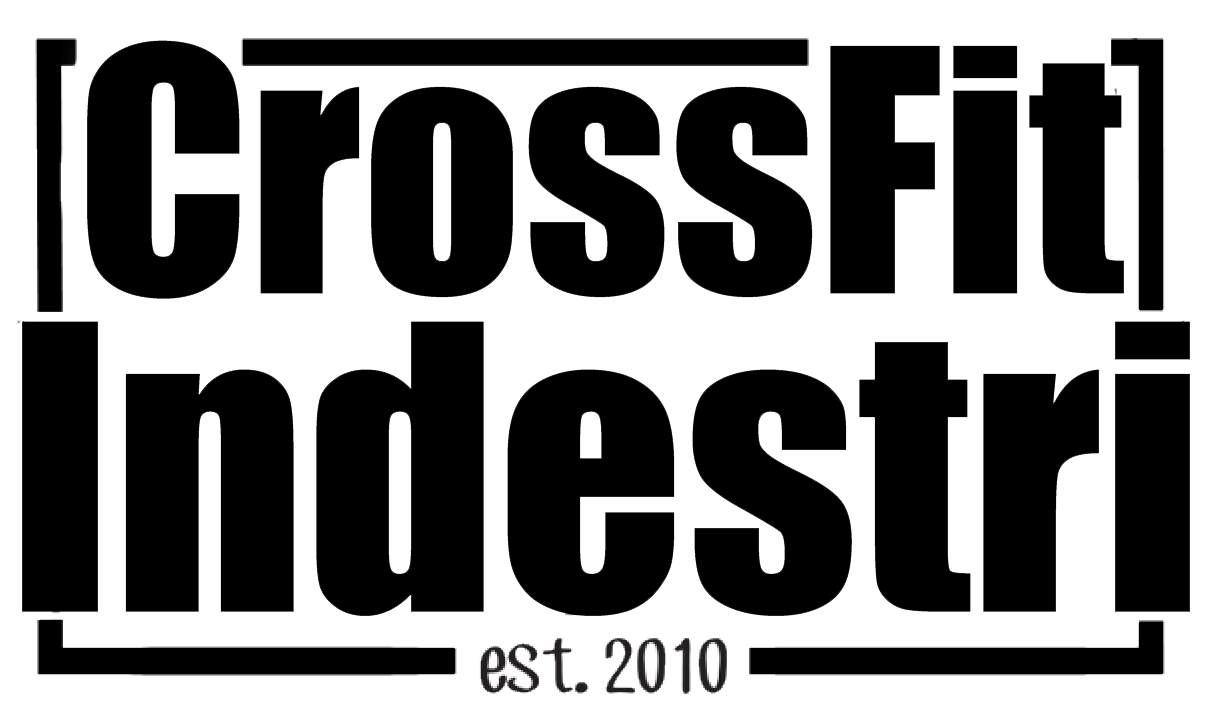Scaled- Wednesday, April 17th, 2019
"Ahead of efficacy is safety."-Greg Glassman, CrossFit Inc. Founder and CEO
Scaling workouts:
For a wide range of our athletes we scale 80-90% of daily workouts—Scaling is a staple for our CrossFit classes and our coaching staff to be comfortable scaling and adapting workouts. Effective scaling isn't just picking a movement out of thin air or going to something you used in a previous workout when you scaled the same movement. Understanding CrossFit programming theory, who is being scaled, why they are being scaled and what is the ultimate goal of the athlete, all need to be taken into consideration.
So lets understand WHY we scale CrossFit workouts:
"CrossFit workouts are scaled to preserve the intended stimuli despite athlete limitations such as experience, injury, illness or range of motion. "
Crossfit.com
If a coach at Indestri is offering you scaling options or you are following along or mix matching our level system, what we are looking for is the opportunity to maximizes relative intensity (load, speed, range of motion) to continue developing increased work capacity despite fitness level, physical impairments or mental limitations.
"The long-term goal of scaling is creating the ability to perform workouts “as prescribed.”
Over the next few weeks I will break down scaling and its components. Today, I am going to address a topic you will hear me mention a lot when I brief a workout at the board.
STIMULUS:
When looking at workouts as a programmer, I will have many intended stimuli at the macro and micro level. To simplify everyone looking at the WOD and reading this, I will break it into 3 main Stimuli that I want to see achieved. Today's we will talk about 1 of 3. Todays stimulus component is:
Time Domain
The duration of the workout along with the athletes fitness level determines the main metabolic pathways trained. Simple terms: Longer workouts demand more time in the aerobic pathway, Shorter workouts challenge us with more time in the anaerobic and glycolytic pathways. This can be mixed and puts us in a middle ground and can be difficult to scale sometimes without understanding the intended stimulus.
For example, heavy loads in volume tend to slow output, creating a mix of aerobic and ATP/CP training and reducing time spent in the glycolytic (sprint) pathway.
Consider this workout for scaling:
21-15-9 reps of:
Deadlifts 355/235 lb.
Rowing for calories
While the shorter-duration row may push athletes into the glycolytic pathway, emphasis will likely shift to the ATP/CP and aerobic pathways as the heavy deadlifts significantly slow the output. Simply put heavy deads will change the sprint row to a medium to long time domain workout.
When I am considering how to scale this workout, I strive to preserve the original intent: Aerobic training via heavier loading. Therefore, I don’t scale load to the point that an athlete works so quickly they remain primarily in the glycolytic pathway and miss the stimulus of the heavy lift.
One method I use for accomplishing this goal is to Prescribe (Rx) “355/235
Scaling Level 1- 2: 70-85 percent of 1-rep max.” This keeps all athletes in the right realm of stimulus but also lets the Rx athlete know that if 355/235 is not in the 80% range of their 1 RM deadlift then they shouldn't Rx this WOD.
Another method I use is; figuring out the duration of effort for a task. This is a simple way to assess the effectiveness of scaling for metabolic pathway. Example, An elite female athlete, 21 reps at 235 lb. should be approximately a 75-90-second effort. If an athlete that is being scaled finishes the set of 21 deadlifts in 35 seconds, They are likely lifting too light and we need to rethink the scaling method ( weight).
How do you figure this out?
Your coach will do this for you.
The way we figure this out in many cases is in the focus of our class. We use the focus as strength training and skill development but I mainly program it to prep you for your workout and get an idea of what you can do safely and what will that look like when we turn up the intensity. So when scaling ask your coach and don't always assume if you did this last time you will do it again.
Overall:
Be prepared to scale any workout and never think you should always Rx just because you can do all the movements. Ask yourself or the coach, What is the stimulus?
All the best
Coach Stouty

Next Chat will be about scaling by Load/Skill
Wednesday, April 17th, 2019
Focus:
Sh. Press
3 @ 70%
3 @ 80%
3+ @ 90% ( should be trying to hit 4 if you have been consistently hitting strength work)
.
WOD :
16 Min AMRAP
9 Overhead Squats 115/80
1 Legless Rope Climb
6 Strict Sh. Press 115/80
Level 2:
9 Overhead Squats 75/55
1 Rope Climb
6 Strict Sh. Press 75/55
Level 1:
9 Overhead Squats 35/45
1 Hand over hand sled drag and push back
6 Strict Sh. Press 35/45
Cash Out:
Alternating Tabata
8 Rounds of:
20 Seconds of L-Sit
10 Sec Rest
20 Second Hollow Rock
10 Sec Rest
.
Check back each night at 8pm for the next days WOD
.
Contact us:
Address: 200 Mountain Rd #3, Collingwood, ON L9Y 4V5
Phone: (705) 444-0006
Follow us on Instagram @crossfit_indestri
